Introduction
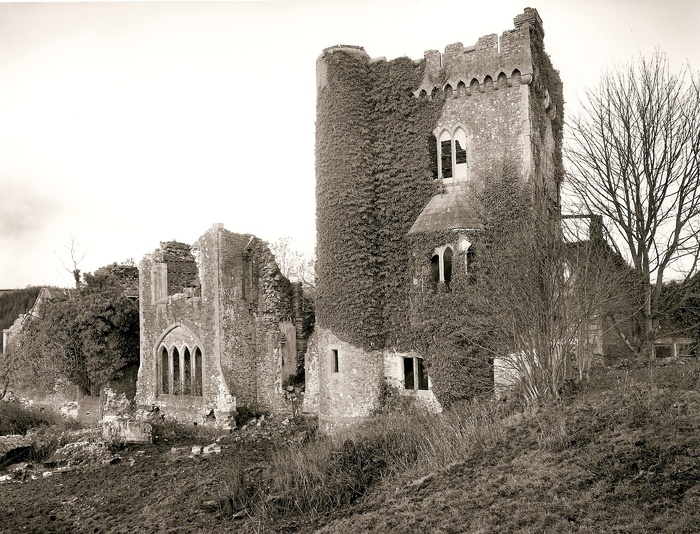
Bronwydd 1996
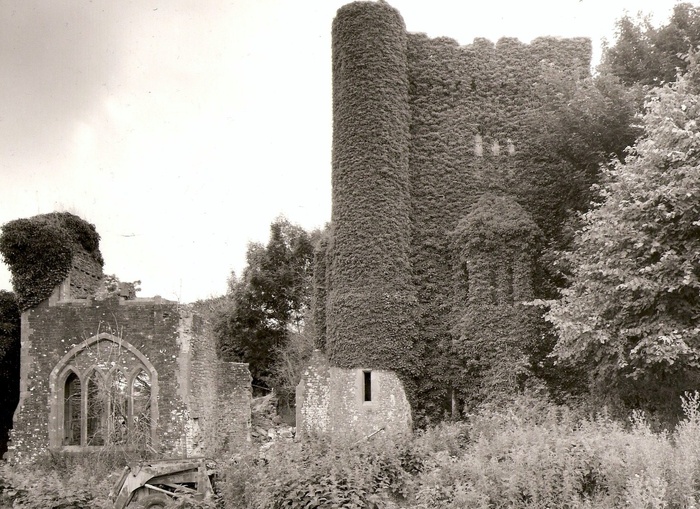
Bronwydd 2010
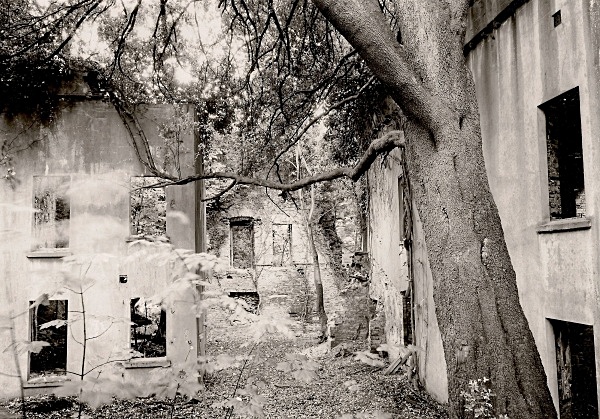
Llangennech Park House 2005
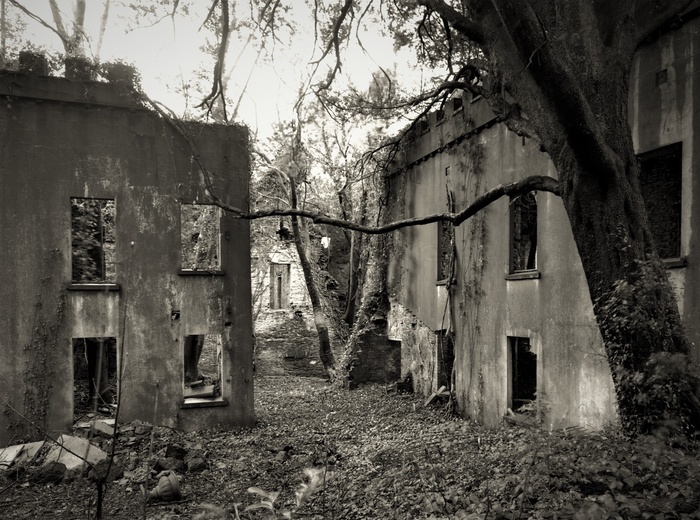
Llangennech Park House 2020
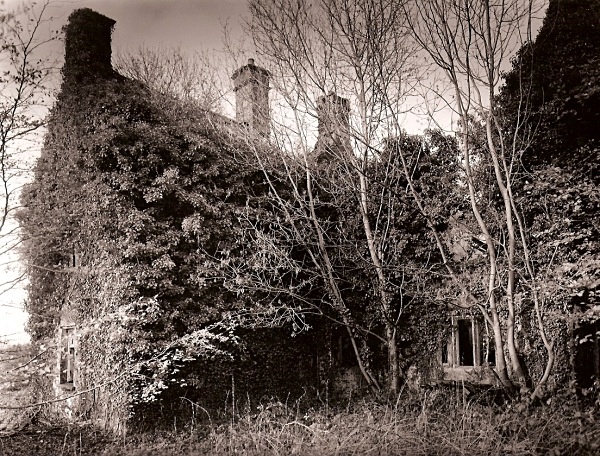
Pembrey Court 1997
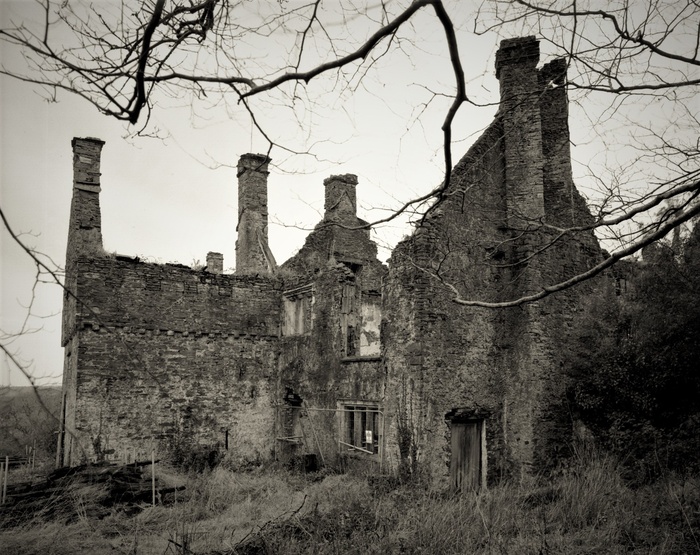
Pembrey Court 2019
INTRODUCTION TO GRAND DECLINES: THE DERELICT MANSIONS OF WALES 1995 - 2022
INTRODUCTION TO GRAND DECLINES: THE DERELICT MANSIONS OF WALES 1995 - 2022
I have been photographing ruins ever since I first picked up a 35mm camera in 1989. My first few films were all colour but then, after a couple of weeks, I tried a black and white film and was instantly converted. I lived in Mid Wales where there were plenty of ruins to photograph; old mining buildings, farmhouses and cottages, all empty, roofless, romantic and alluring. Alongside this I also lived, with my parents, on the picturesque Hafod Estate at the foot of the Cambrian Mountains – This gave me immediate access to the wild landscape of mid-Wales. I only had to step out of my door and I was in the wilderness.
At this time I worked in the local university library in Aberystwyth. I became fascinated with a book there called ‘The Lost Houses of Wales’ by Thomas Lloyd. Within its covers hundreds of old Welsh mansions were documented, in black and white, as great piles of stonework, collapsing masonry and elaborate archways. It was always a thrill to flick through the pages and I spent hours imagining on visiting the house therein.
In 1993 I left my job at the library and decided to attend college studying photography at Carmarthen in South Wales. A friend told me of this old ruined mansion some 8 miles from Carmarthen. One Saturday morning my friend took me with about five others, in two cars, on a short expedition to visit a mansion called Aberglasney.
We left the cars at the end of an entrance and followed a path, through the high gates, that led to the mansion and under a yew tree tunnel, up the mansion facade and into a great hall. Decorative blocks of plaster-work hung perilously around the high walls and other blocks lay redundant on the heavily littered floor. As we explored the house, its many rooms, the crumbling masonry and the expansive, hidden and overgrown gardens, I became overwhelmed with the romanticism of the place. I knew I had stumbled across something special and I returned on my own, very early, the following morning with my camera.
I did not know the name of the house until going back to my old library, where I worked weekends, and it was not long before I came across pictures of the mansion. I knew quickly that I had to find other such properties.
I had purchased a relatively cheap (£700 in 1992) 5x4inch wooden field camera just prior to moving to Carmarthen and it was with this I thought would do most justice to the house. I spent half a day at Aberglasney mansion on a Sunday morning. I was nervous. Was I trespassing? Was someone watching me? Would one of those beams come crashing down upon me? Will the floor give way and the dark murky waters of the cellar pull me under? On my first visit I had also an enormous feeling of déjà vu whilst visiting for the first time. Around the back of the house are a few buildings and it as here that I felt a strange sensation of have being there once before. Looking back over the years I am now convinced that I had just been dreaming of visiting ruins. I have had many re-occurring dreams of visit ruins. They are never frightening dreams, just dreams of exploration and fascination.
Needless to say no beams came crashing down, no land-owner came after me with a shot-gun! As I explored the endless rooms of dripping water and peeling paint I became accustomed to the dimness, and the seemingly unfriendliness of the house, and relaxed. After a few hours the house changed from foe to friend. I did not bother exploring the cellars, they were flooded and felt unnecessarily dangerous. The exposures I made, some of which I am still proud of today, showed a house, peering out from the undergrowth, proud with resolve with raindrops clinging to every leaf, to every soggy floorboard and every searching ivy coil. There appeared to be an endless array of photographic compositions. It was from this trip to Aberglasney that the project began and I soon had a list of other ruined mansions to visit.
Looking back I wonder if I could turn back the clock if I would have taken the same photographs as I did back then. There are definite viewpoints I recall that I did not capture on film. I wonder why this is. It might have been because I only had a few dark-slide sin those days and I was restricted to how many photographs I could take each visit. I was also on a tight-budget. Further visits, to further ruins, confirm this. I think I took six images at Iscoed mansion and abut the same during my first visit to Tegfynydd.
More historical houses were visited. It is not necessarily the size of the house that I was interested in, nor its social or economic history but rather the juxtaposition of man and nature. It is often the unwritten history of the previous tenants; those who loved, neglected, restored, became bankrupt - their heirs and children - through to the most recent tenants; the squatters, vandals, uninterested heirs and those with no other interest but the demolition worth. It is this that interests me; when the first slate falls from the roof and thereby releases the inevitability of nature quickly engaging the house and filling the rooms and walls not with fine furniture, conversation and works of art but with damp, mould and patches of fungi.
Over the next few years I began researching and photographing many properties. This hunting for ruins was an exciting time, driving up to a property, the anticipation, the nervousness of the unknown, walking around high damp ruinous walls and then exploring empty rooms, water dripping, perilous roofs, gardens overgrown but occasionally revealing exotic plants sprouting out of the 6 foot high brambles and nettles. I visited a number of properties where the house no longer stood. Often only service quarters remained, or stables and often I did not deem these interesting enough to document. This is regrettable but I must not be too harsh on myself. I was young, early twenties. I did not know at that point just how much of my free time I would spend searching for such buildings.
To this day there still stand a few properties not visited, those I could not find, or was unable to gain permission to enter or those I simply do not know about, slowly crumbling away, to be forgotten forever. To some extent though, a project never really finishes. These houses still stand, some I haven’t visited in over twenty years, what would I find if I returned? It is also true that sometimes only in collapse do other details emerge, such medieval windows or carvings in stonework, otherwise unknown or considered lost or forgotten.
The fortune of some of these properties has improved. Aberglasney, Bertholey, Lleweni Stables and Sker House have been restored and at many other estates trusts have been formed to either restore on to contain the dereliction. Gwrych Castle and Baron Hill have both had plans accepted for restoration, a hotel for the former and luxury flats for the latter (although summer of 2019 nothing has happened).
I aim to continue seeking out such houses, lost and long declined, and hopefully photograph them sympathetically capturing some of their character and architectural detail. It was soon becoming apparent that I could not photograph mansions throughout Wales forever. There are only so many and further still it was not necessarily the larger houses that moved me the most. I knew of scores of old farms and cottages and these were surely worth documenting too. I had photographed a number by mid-2000’s but after moving to Brighton and then returning back to Wales in 2010 I decided to make a concerted effort to document as many ruins, especially throughout Ceredigion as I could find. I moved from Ceredigion to Swansea in 2016 but visited hundreds of ruins in that time. Since 2016 I have mostly focused on South Wales; Swansea, Neath Port Talbot, Carmarthenshire and the Brecon Beacons.
___________________________________________________________________________________________________
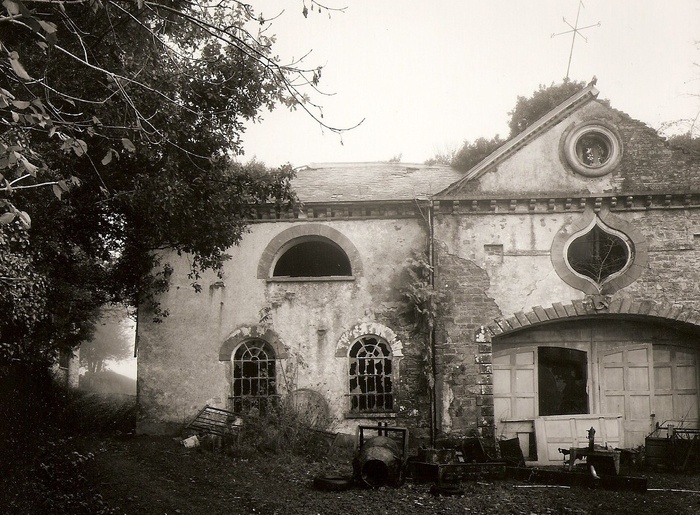
Neuadd Fawr Stables 1996
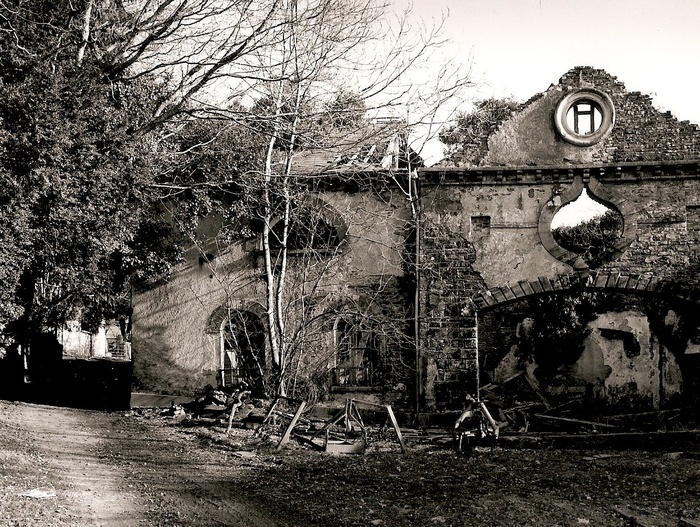
Neuadd Fawr Stables 2010
___________________________________________________________________________________________________
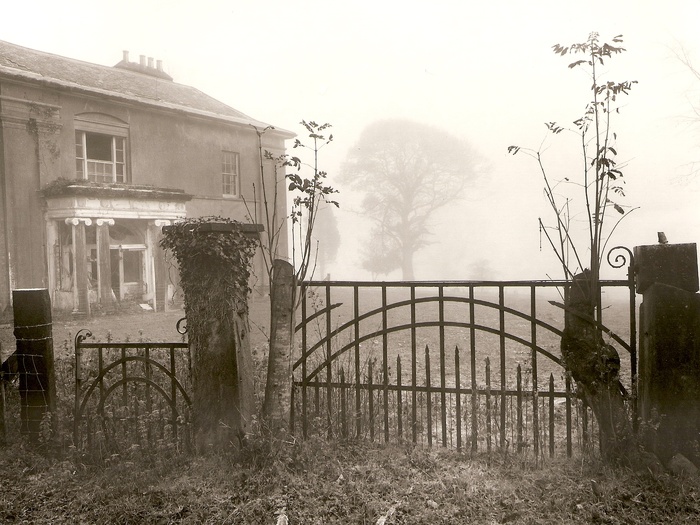
Neuadd Fawr 1996

Neuadd Fawr 2011
___________________________________________________________________________________________________
Y DIRYWIAD MAWR: Chwilio am Adfeilion Plastai Cymru (1995-2022)
Yn 1982 symudodd fy rhieni o Swydd Gaerlŷr i ardal Tregaron yng Nghanolbarth Cymru. Syrthiais mewn cariad ar unwaith â’r ardal wledig gan ddechrau crwydro ac archwilio. Ychydig flynyddoedd wedyn gofynnais am gamera yn anrheg pen blwydd a mynd ati i dynnu lluniau o’r llefydd ble awn i grwydro. Wedi ambell gam gwag, rhoddais dro ar ffilm du a gwyn a chael fy mherswadio’n syth.
Cawn fy nenu’n aml at y nifer o adfeilion a welir ledled y Canolbarth; yn arbennig Mwyngloddiau Plwm Cwmystwyth, cyn ystâd hardd plasty’r Hafod, Pyllau Teifi, Cwm Elan a chyn ardaloedd mwyngloddio eraill, ffermdai a bythynnod – pob un yn wag, di-do, rhamantus a hudolus.
Yn 1989 cefais swydd yn llyfrgell y Brifysgol yn Aberystwyth. Fe’m swynwyd gan lyfr o’r enw ‘The Lost Houses of Wales’ gan Thomas Lloyd. Rhwng ei ddau glawr roedd cofnod o gannoedd o hen blastai Cymreig, nifer wedi eu dymchwel neu’n adfeilion.
Yn 1993, fe adewais y llyfrgell i fynd i astudio ffotograffiaeth yng ngholeg Caerfyrddin. Soniodd ffrind am hen adfail plasty rhyw 8 milltir i ffwrdd. Un bore Sadwrn, aeth fy ffrind a phump ohonom ar daith fer i ymweld ag adfail plasty o’r enw Aberglasney.
Gadawsom y ceir wrth ben y fynedfa a dilyn llwybr troellog llawn mieri at y giatiau uchel. Gallem weld rhywfaint ar y tŷ, yn llwyd ac yn dioddef effeithiau’r tywydd, trwy’r glaw mân.
Cerddom trwy’r porthdy castellog a chropian dan dwnnel pren ywen at flaen y plasty ac i mewn i neuadd fawr.
Roedd blociau o blastr addurnol yn hongian yn beryglus o amgylch y waliau uchel ac eraill yn gorwedd yma ac acw ar y llawr. Wrth archwilio’r tŷ, gyda’i ystafelloedd niferus a gwaith maen yn mynd â’i ben iddo, a’r gerddi helaeth, cudd wedi tyfu’n wyllt, cefais fy syfrdanu gan ramant y lle. Roeddwn yn gwybod fy mod wedi canfod rhywbeth arbennig, a dychwelais yn gynnar iawn y bore canlynol gyda fy nghamera.
Yn ystod y blynyddoedd canlynol, bum yn ymchwilio cymaint o dai ag y gallwn. Ysgrifennais at Thomas Lloyd a gofyn a oedd yn gwybod pa rai oedd yn dal i sefyll o’r casgliad yn ei lyfr. Bu’n ddigon caredig i ateb a dyma roi bywyd i’r prosiect. Dechreuais leoli, chwilio am a thynnu lluniau o gymaint o blastai ag y gallwn, ond yn aml roeddwn yn methu cael caniatâd neu’n methu dod o hyd i’r hyn oedd gynt yn glamp o dŷ ond erbyn hyn yn ddim ond pentwr o gerrig neu fyngalo newydd yn rhannu enw’r tŷ yr oeddwn yn chwilio amdano.
Mae ffawd nifer o’r tai hyn wedi gwella. Adnewyddwyd Aberglasney, Bertholey, Lleweni a Sker House ac ar nifer o ystadau eraill sefydlwyd ymddiriedolaethau naill ai i’w hadfer neu i atal gwaethygiad pellach. Rwy’n bwriadu dal ati i chwilio am dai colledig o’r fath, sydd wedi hen fynd i’r gwellt, gan obeithio gallu tynnu lluniau sympathetig ohonynt, a chyfleu rhywfaint o’u cymeriad a manylion pensaernïol.
___________________________________________________________________________________________________
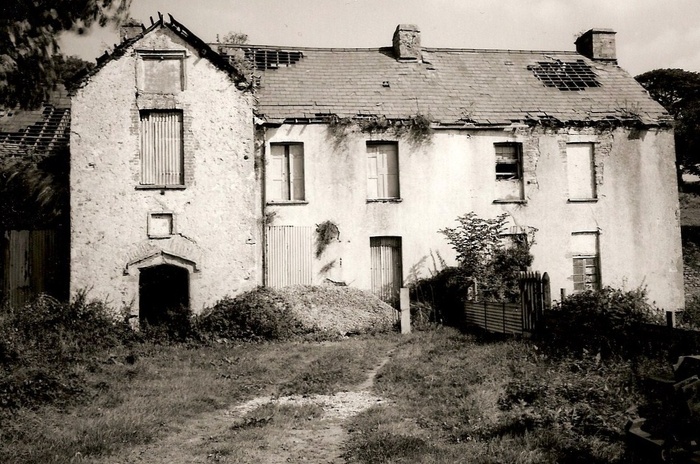
Blaen Baglan 1997
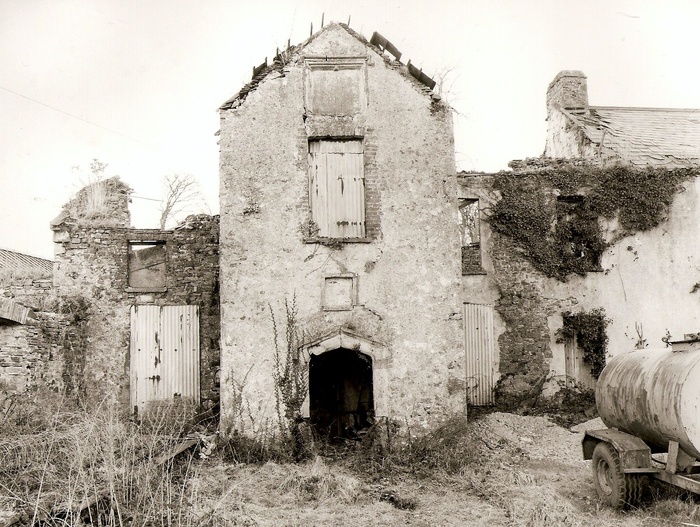
Blaen Baglan 2010
___________________________________________________________________________________________________
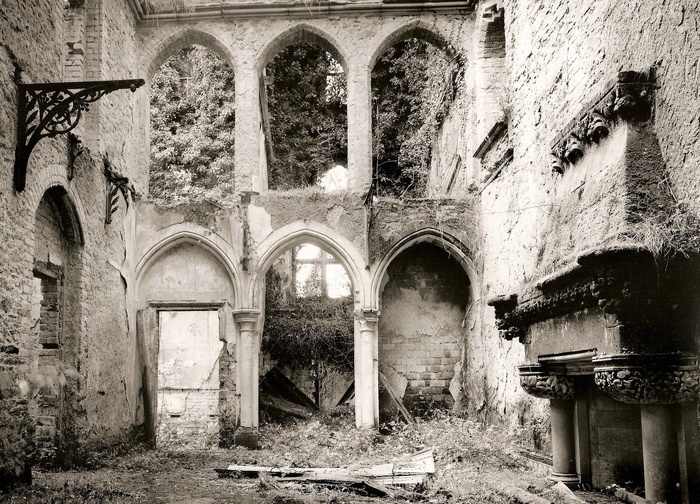
Tegfynydd 1996
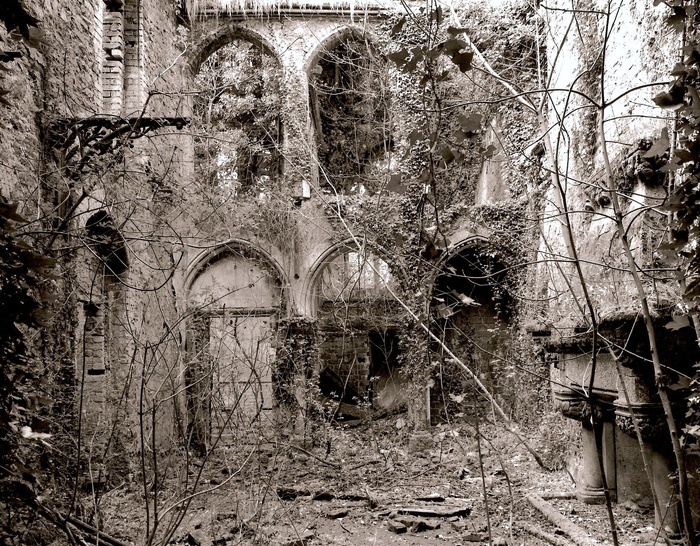
Tegfynydd 2010
___________________________________________________________________________________________________
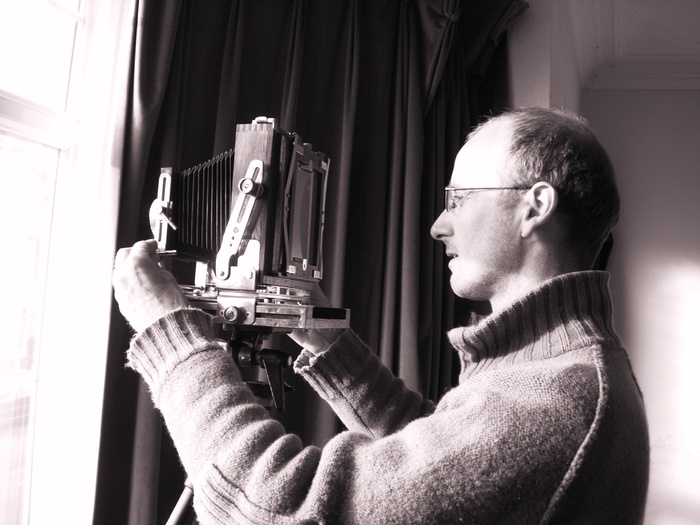
2010
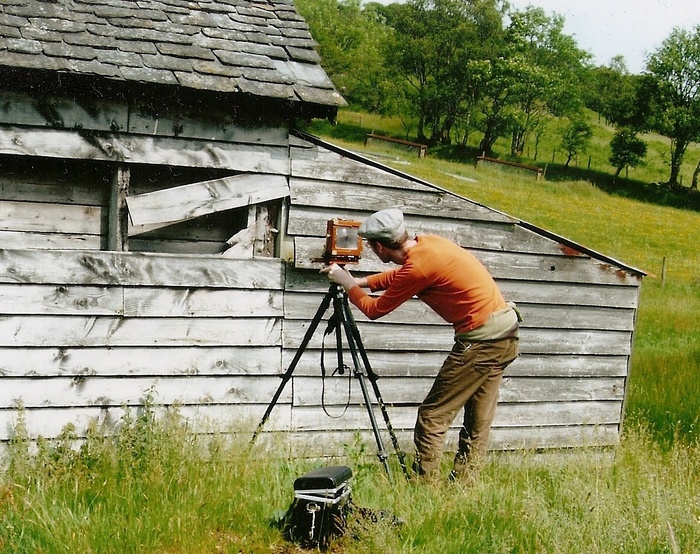
Paul White at Elan Valley 2003